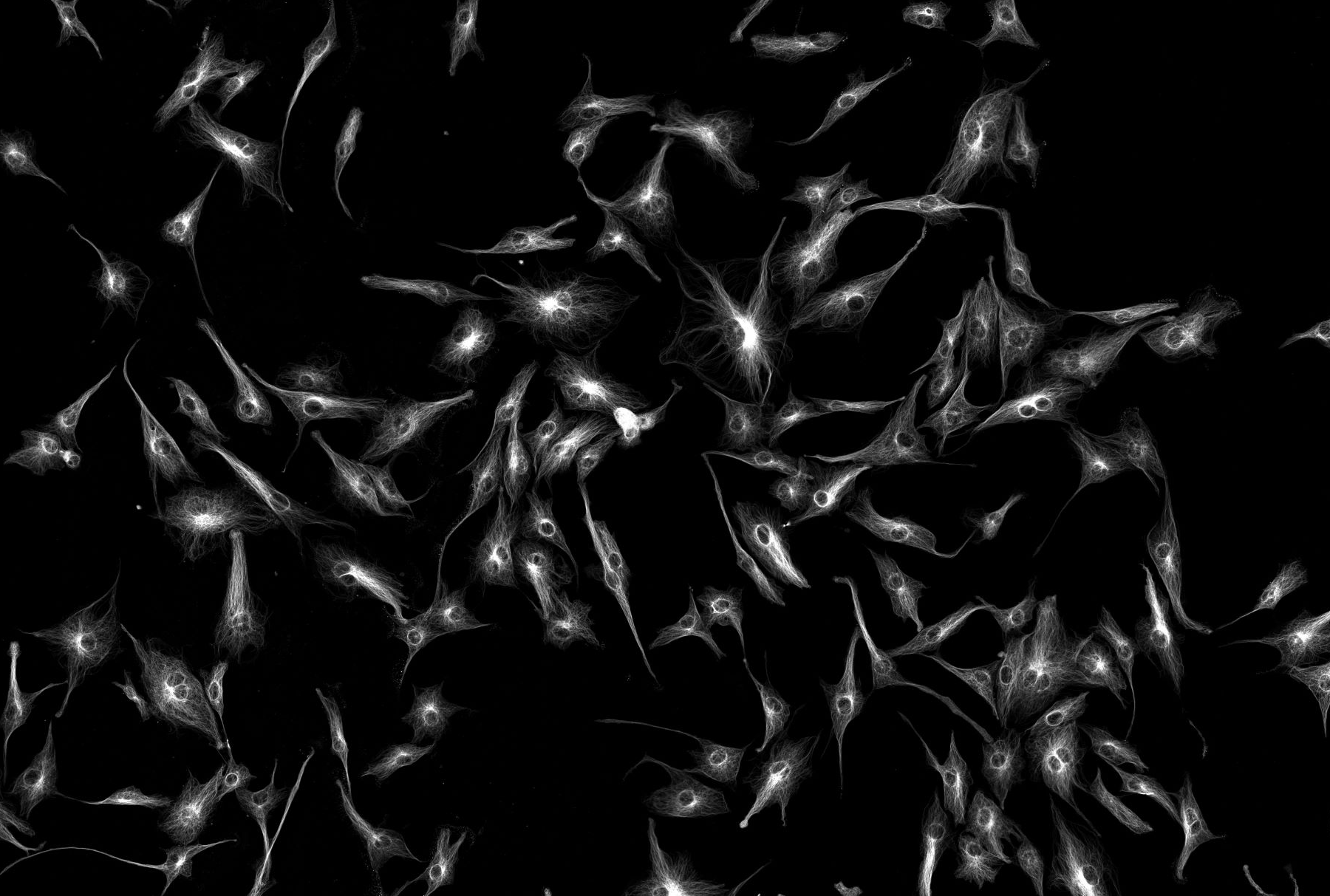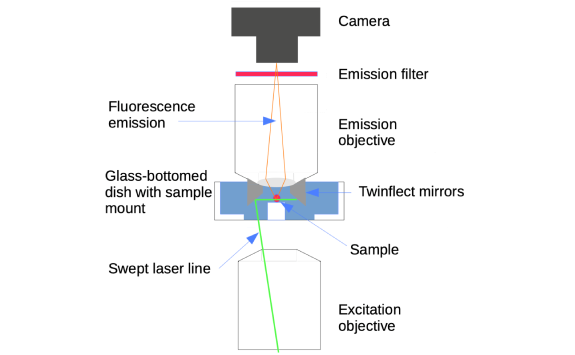Light-Sheet Microscopy
The Leica Digital Light sheet (DLS) available in the Bioimaging Unit utilises the same concept, except that instead of creating a plane of light it uses a standard confocal scanner unit to sweep a confocal point of light across the sample very quickly to generate a virtual sheet. Combining this with the integration time of the camera produces an evenly illuminated sample. It is configured around a standard confocal for the excitation and uses two 45o mirrors around an emission objective to allow generation of a perpendicular ‘plane’ of light through the sample (Figure 1), which is mounted in a glass bottomed dish slightly raised to allow positioning of the mirrors on either side. Two mirrors allows excitation from either side, helping overcome the problem of scattering through thicker/ more opaque samples by combining the results from both. Typically, the DLS captures a single plane in one colour every 50ms and can accommodate samples up to 3-4 mm wide.

